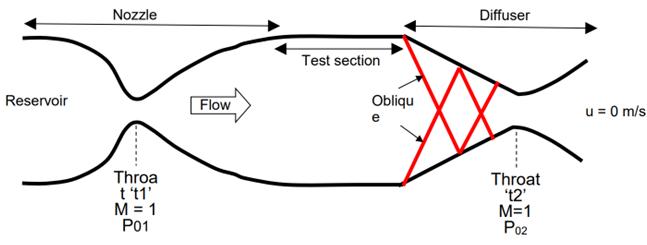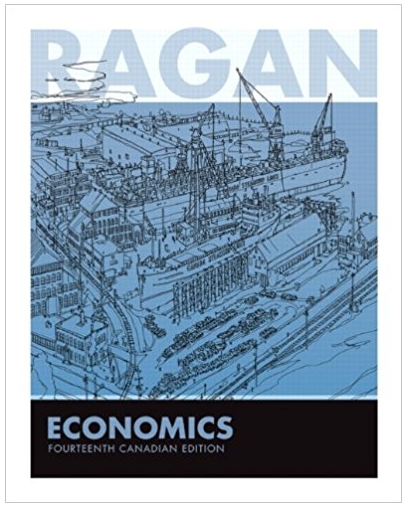Figure below shows a typical supersonic/hypersonic wind tunnel layout that consists of a converging-diverging nozzle that accelerates
Question:
Figure below shows a typical supersonic/hypersonic wind tunnel layout that consists of a converging-diverging nozzle that accelerates the air stream from the reservoir to the design Mach number isentropically. The Mach number is one at the nozzle throat. The nozzle is followed by a straight test section with isentropic flow. A converging-diverging diffuser section follows where a series of oblique shocks in the converging section decelerates the flow to Mach one at the diffuser throat and subsequent isentropic deceleration to zero velocity in the diverging section. Using appropriate equations, assuming no external heat transfer,
a. Determine if the velocity at nozzle throat ‘t1’ is greater/lesser/equal to the velocity at the diffuser throat ‘t2’
b. Determine if the (static) density at nozzle throat ‘t1’ is greater/lesser/equal to the (static) density at the diffuser throat ‘t2’
c. Determine the ratio of throat areas in terms of stagnation pressures at stations ‘t1’ and ‘t2’.


Microeconomics
ISBN: 978-0321866349
14th canadian Edition
Authors: Christopher T.S. Ragan, Richard G Lipsey




